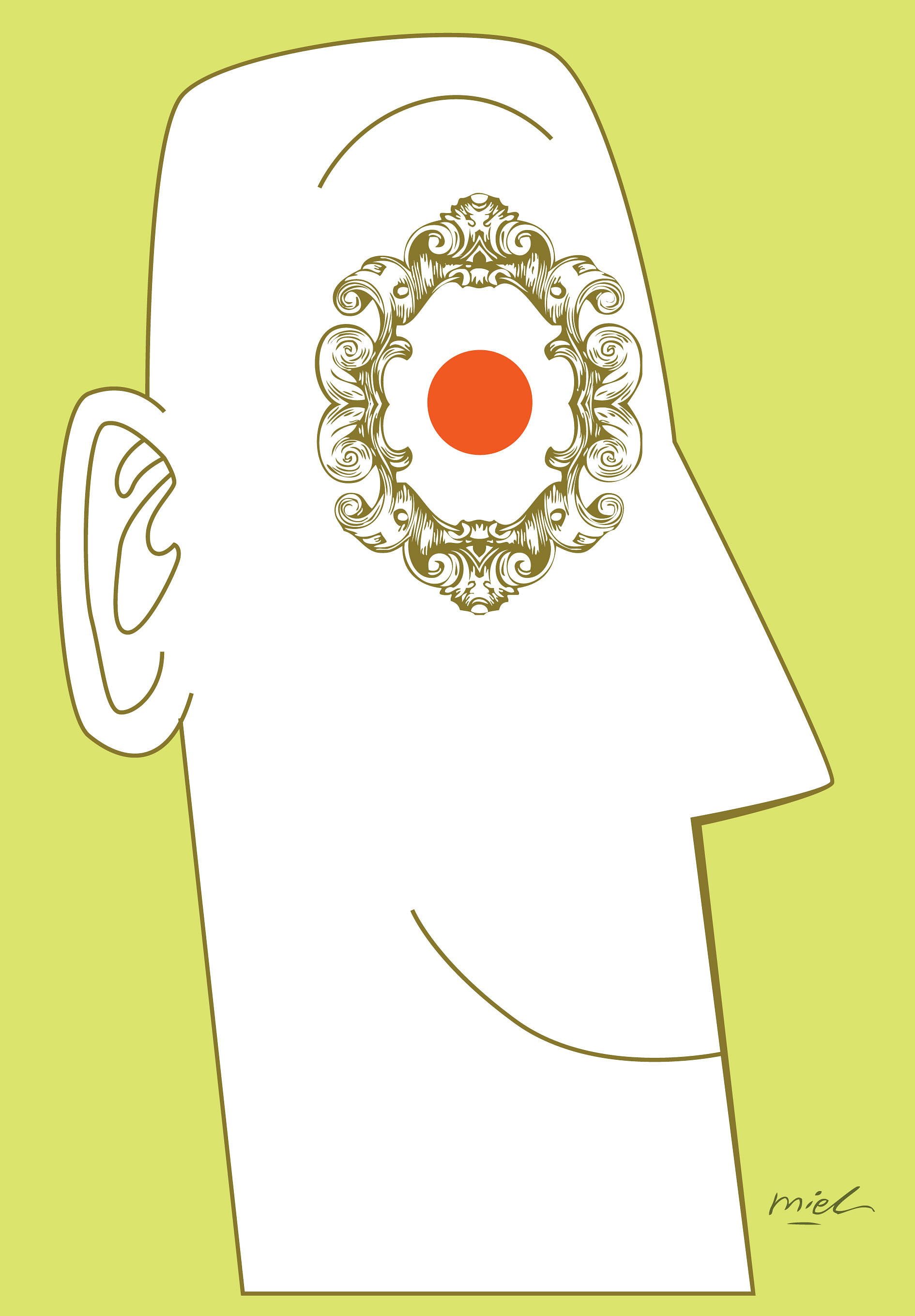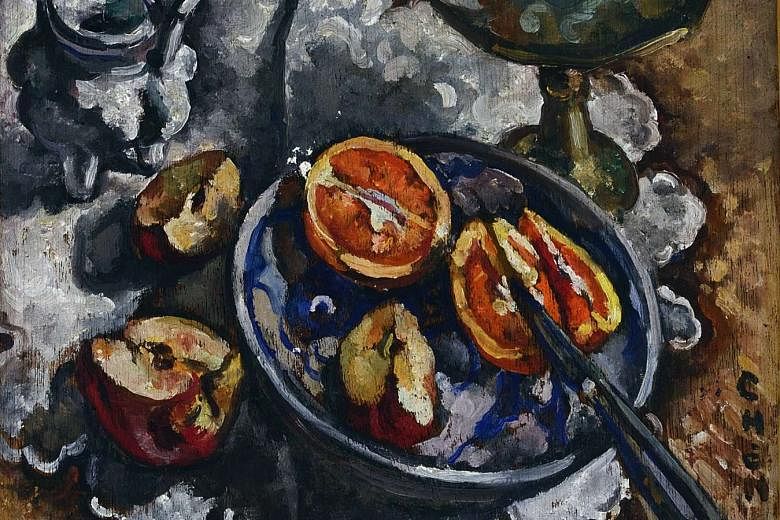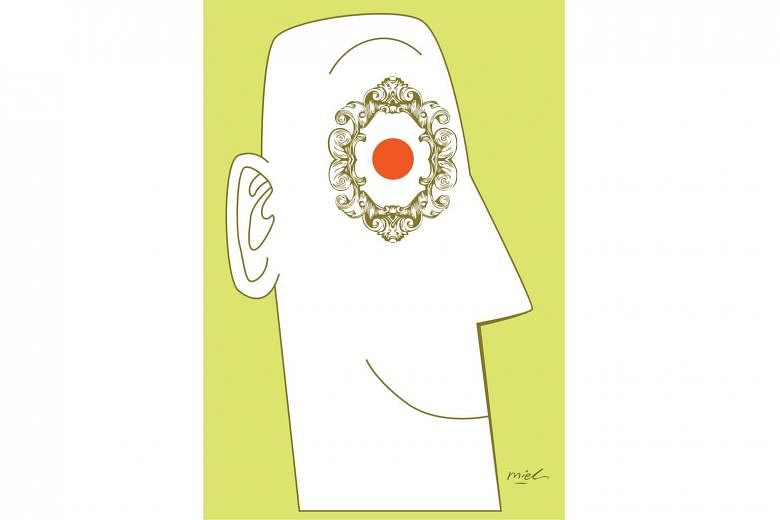It was an apple and an orange that made me aware of an emotion I had not known until now - a paradoxical sense of joy and sadness experienced in equal intensity simultaneously. A feeling that springs on you when you find something precious you lost but never even knew you were missing before that moment of reunion.
The apple and orange in question are the subjects of a captivating still life by Singapore artist Georgette Chen hanging in the National Gallery Singapore. The painting had been in exhibitions at the National Museum and Singapore Art Museum in the 1980s and 1990s but it was only on a recent visit to the National Gallery Singapore that I saw it in person for the first time.
I was floored and unmoored by the encounter.
Where had Still Life With Cut Apple And Orange been all this time? And yet it now hangs, in all its splendour, in the newly opened art museum.
EMBRACING ART
The $532 million National Gallery Singapore that opened last Tuesday was a decade in the making.

Occupying the former Supreme Court and City Hall buildings, it has finally given a permanent home to the largest public collection of modern art in Singapore and South-east Asia, including Chen's stellar painting.
To celebrate its opening, the adjacent Padang was transformed into an art-inspired carnival for the opening weekend.
The last time Singapore opened an arts and cultural space on that scale was more than a decade ago when the $600 million performing arts centre Esplanade was unveiled in 2002 with a grand display of fireworks, music and dance.
The public's response to the two projects, however, could not be more different.
When the 6ha Esplanade was built, some griped at its high cost and many sceptics considered it an elitist extravagance. There were worries it would become a white elephant and fail at becoming an arts centre for the masses.
Fast forward 13 years. Few now decry the cost of refurbishing the two national monuments to house the 64,000 sq m National Gallery Singapore, much less worry about it being the people's museum; crowds numbering in the tens of thousands thronged the museum in its opening week.
The difference in the public's reaction to these two cultural icons is a measure of how far Singapore's arts and cultural scene has come.
This is mirrored by recent cultural statistics. From 2004 to last year, attendance at public and private museums jumped from 2.13 million to 8.07 million visitors. The National Arts Council's latest Population Survey of the Arts in 2013 also found that 62 per cent of respondents were more appreciative of arts and culture in their lives compared to five years ago.
SHUNTED FROM PLACE TO PLACE
Equally, the National Gallery Singapore is a symbol of how art and museums here have made headway.
Among the earliest art museums here was the University of Malaya Art Museum, established in 1955 at the school's Bukit Timah campus for the teaching and study of art history. Its collection was a reflection of the times, the search for a Malayan identity set against the wider context of South-east Asia and Asia, and it was instrumental in pioneering the academic study of the art and histories of Singapore and Malaya.
The museum, however, was shut in 1973 after the university in Singapore chose to terminate its art history programme. The collection was moved to the National Museum of Singapore and stored in its archives.
In 1976, a gallery space was set aside in the National Museum in Stamford Road to show art. The National Museum Art Gallery at under 2,000 sq m, however, cried out for space and proper exhibition facilities. It could accommodate only one show at a time - frequently group or solo exhibitions of living artists in Singapore - which meant Singapore's sweep of visual art heritage was seldom on display.
The opening of the Singapore Art Museum in 1996 in the former St Joseph's Institution in Bras Basah Road offered hope for a remedy against amnesia of Singapore's artistic history and heritage.
Yet, a permanent display of Singapore's long and rich art history continued to be absent in the 10,000 sq m museum, whose exhibition programme was a changing roster of shows of both international and local art.
And who knew how long Singapore would have had to live without first-hand experience of its artistic legacy.
After all, the proposal for the former Supreme Court and City Hall buildings to be reborn as a premier art museum was met with scepticism when it was raised by Dr Lee Boon Yang, the minister in charge of the arts from 2003 to 2009.
MUSEUM'S RAISON D'ETRE
The recent opening of the National Gallery Singapore, anchored by two permanent galleries - the DBS Singapore Gallery and UOB South-east Asia Gallery - which display about 800 works of art from the 19th century through to the modern day, is therefore a momentous event.
For one thing, the relatively under-researched field of the art histories of Singapore and South-east Asia will benefit from the museum's presentation of a canon of art. It offers an important starting point for further scholarship and discussion.
More importantly, the country's collection of fine art, stretching back to the 19th century, is finally given the recognition it deserves.
No longer shunted around or languishing for long periods in dark storage rooms, it lives and breathes among its people in two stately, historic buildings. The works of art will be the backdrop for countless family photos marking visits to the museum.
It is my wish, as an art enthusiast, that some of the works will lodge themselves in the hearts and minds of lovers, friends and strangers. That they will feed conversations about what is art for time to come, and be a source of inspiration for other arts and culture practices.
Most of all, I hope many others will have their own personal, idiosyncratic moment of encounter with a particular work of art, as I had with that still life of a simple apple and orange.
In the end, no matter how beautiful an art gallery is, or how illustrious its collection, it is in such moments that an art museum finds its raison d'etre - when a visitor stands transfixed before a work of art, in a moment of recognition.
Such moments are priceless and I look forward to more of them on future visits.



